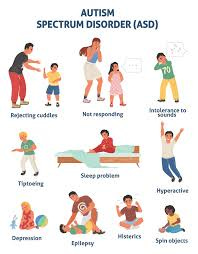The term "on spectrum" usually refers to the idea that certain characteristics or traits fall within a particular range or continuum of behaviors, abilities, or conditions.
For example, autism is often described as a spectrum disorder because the severity and nature of the symptoms can vary widely from person to person, but all fall within the range of autism spectrum disorder (ASD). Similarly, sexuality is often discussed in terms of a spectrum, with individuals falling at different points along the continuum of heterosexuality, bisexuality, and homosexuality.
Being "on spectrum" can also refer to being within the normal range of a certain trait or behavior, without necessarily indicating a disorder or pathology. For instance, a child who is "on spectrum" for language development might be slower to start speaking than other children but still within the normal range of development.
Overall, being "on spectrum" implies that a particular characteristic or trait exists along a continuum rather than being a binary or categorical phenomenon.
What are the common traits associated with the ASD?
Autism Spectrum Disorder (ASD) is a neurodevelopmental disorder that is characterized by impairments in social communication and interaction, as well as restricted and repetitive patterns of behavior, interests, or activities. Some of the specific traits and symptoms associated with ASD include:
Social communication deficits: Individuals with ASD may have difficulty understanding and using nonverbal communication, such as eye contact, facial expressions, and gestures. They may also struggle with verbal communication, such as initiating and maintaining conversations and understanding social cues.
Repetitive behaviors and routines: Individuals with ASD may engage in repetitive movements, such as rocking or hand-flapping, or have rigid routines and rituals that they need to follow. They may also have a restricted range of interests or preoccupations with specific topics or objects.
Sensory processing differences: Many individuals with ASD experience sensory processing differences, which means they may be hypersensitive or hyposensitive to certain stimuli, such as light, sound, touch, taste, or smell.
Challenges with executive functioning: Executive functioning refers to a set of cognitive processes that help individuals plan, organize, initiate, and complete tasks. Individuals with ASD may have difficulties with these skills, which can impact their ability to manage daily activities, such as getting dressed, completing homework, or organizing their environment.
Difficulty with social relationships: Individuals with ASD may struggle to form and maintain relationships with peers and may have difficulty understanding social norms and expectations.
It's important to note that the severity and presentation of these traits can vary widely among individuals with ASD, and not all individuals with ASD will exhibit all of these traits. Additionally, there may be other characteristics or comorbid conditions that co-occur with ASD, such as anxiety, depression, or ADHD.






